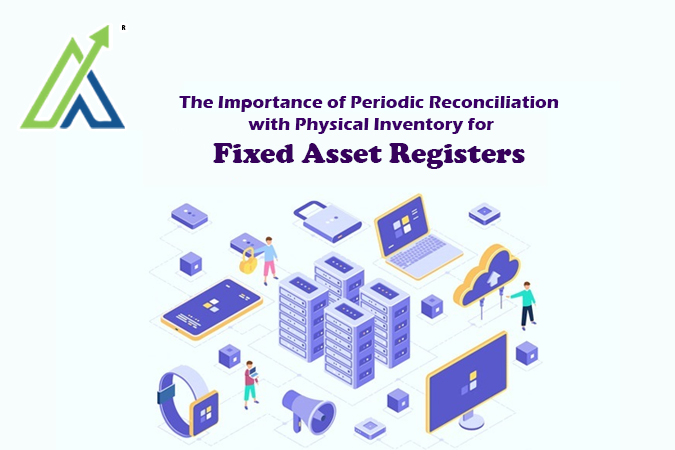Any organization needs to manage fixed assets as a must-have requirement. Part of this would include periodic reconciliation against physical inventory so that the fixed assets register indeed represents ownership of assets and thus retains correct financial records and smooth operations.
Understanding the Fixed Asset Register
Fixed assets of an entity are recorded in a fixed asset register that gives a clear account. These include buildings, vehicles, machinery, and plant equipment. Typically found in such a record are details like what the asset is, how much it cost, where it is located, when it was purchased, and its depreciation status.
This register is vital for financial reporting and helps track asset depreciation for tax and accounting purposes.
What is Periodic Reconciliation?
Periodic reconciliation involves comparing the physical inventory of assets with the entries in the fixed asset register. This process spots discrepancies, like missing or unrecorded assets, and updates the register to match the current status of all assets.
Benefits of Periodic Reconciliation
Accuracy in Financial Reporting: Accurate asset records are essential for precise financial statements. Discrepancies can lead to incorrect valuations and financial misstatements.
Enhanced Asset Management: Planning for repair or replacement of assets and optimizing asset use are made easier with precise asset location and condition knowledge.
Example: “Determining underutilized machinery can help allocate resources effectively.”
Fraud Prevention and Detection: Regular reconciliation can help identify and stop fraud by exposing unauthorized asset sales or acquisitions.
Example: “A lost pen drive identified during reconciliation was linked to being improperly removed by an employee.”
Compliance with Regulations: All the records are maintained according to the mandated law. Plenty of rules and regulations are used, and reconciliation on a regular basis provides surety for the rules and regulations.
Example: “Accurate asset records ensure compliance with audit requirements.”
Steps for Effective Periodic Reconciliation
- Schedule Regular Intervals: Organizational aspects have to be considered when choosing the frequency of reconciliation: set a regular schedule, whether it be quarterly, semi-annually, or yearly.
- Physical Verification: Verify the condition of each asset in person and compare it with the register data.
- Update the Register: When inconsistencies are discovered during physical verification, note them and update the fixed asset registry to accurately represent the state of the assets
- Investigate Discrepancies: Investigate any notable disparities to determine the reason behind them and implement solutions.
- Review and Improve Processes: Examine the reconciliation process periodically in order to identify areas that could be enhanced and implement best practices for asset management.
Questions to Understand your ability
Ques1: What is a fixed asset register?
- Employee
- Asset
- Supplier
- Transaction
Ques2: What is the primary purpose of periodic reconciliation with physical inventory?
- Salaries
- Inventory
- Profits
- Sales
Ques3: Which of the following is NOT typically included in a fixed asset register entry?
- Description
- Date
- Future
- Location
Ques4: How often should periodic reconciliations be scheduled?
- Daily
- Weekly
- Quarterly
- Yearly
Ques5: What is one benefit of periodic reconciliation?
- Increase
- Planning
- Reduce
- Depreciate
Conclusion
Reconciling the fixed asset register with physical inventory on a regular basis is necessary to preserve its integrity and correctness. By ensuring that the register accurately represents the actual assets, organizations may enhance their legal compliance, operational efficiency, and financial management strategies. Frequent reconciliation fosters long-term performance, enhances asset management generally, and helps identify and stop fraud.
FAQ's
It’s a record where you list all your big assets like buildings, cars, and machines.
It’s key for financial reports and helps you track how much your stuff is worth over time.
You put down what the asset is, its cost, where it’s located, when you bought it, and its depreciation.
It’s when you check if your physical assets match what’s in the register.
It makes sure your asset records are accurate, so your financial statements are correct.
It shows you where your assets are and their condition, helping you plan repairs or replacements.
It catches any unauthorized sales or purchases by finding discrepancies.
Set a regular schedule, physically verify assets, update the register, investigate differences, and improve the process regularly.

